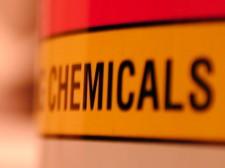
If you want to look for the day when chemophobia - an irrational fear of harmless trace chemicals - came into being, September 6th, 1958 has to be in the running.
On that day, the Food Additives Amendment of 1958, a modification of the United States' Food, Drugs, and Cosmetic Act of 1938, went into force. It was called the Delaney Clause, after Congressman James Delaney of New York, who pushed for it due to reasons that remain unclear (1). Prior to the modification, the United States' Food, Drugs, and Cosmetic Act of 1938 allowed for additives "generally recognized as safe" (GRAS) by scientific experts in the field to be included without issue. Whether they were synthetic or natural made no difference. Delaney changed all that. Now ingredients had to be placed in a science and health ghetto; if any study showed they could cause cancer, even in a rat, and the added ingredient was synthetic, it had to be banned.
The scientific community was understandably apoplectic but it wasn't the first case of scientization of politics and it wouldn't be the last. Like Proposition 65 in California nearly three decades later, lawyers insisted this would not create chaos because only a handful of chemicals had then been shown to be animal carcinogens. Like with Prop 65, the lawyers were blatantly lying, they knew full well that once the law was in place, detection would become profitable and therefore common.
Sure enough, FDA immediately had a problem on their hands. They determined that the herbicide aminotriazole (C2H4N4) could create a thyroid issue which might cause cancer in rats. And then it was detected in some cranberry shipments. Now, scientists knew that rats are not little people, animal studies can only exclude causes of cancer and never show them, and they knew that the dose it took to create the thyroid issue that might create cancer in a rodent was equivalent to 15,000 pounds of cranberries every day for the entire lifetime of the animal but the Delaney Clause did not distinguish between hazard and risk. To the law, one cranberry was equal to 15,000 pounds. A trace amount of a chemical was the same as a quantity equal to five orders of magnitude.(2)
Though FDA debated what to do for months, government really had no choice. In November, the Secretary of Health, Education and Welfare, Arthur Flemming, ruined Thanksgiving for Ocean Spray by announcing that a "cancer-causing chemical" was present in cranberries. Though 99% of cranberries did not contain any traces of the weedkiller, sales plummeted. President Eisenhower had to suffer through applesauce at his holiday dinner.
Chemophobia was about to take America by storm (3) and book publishers were already taking notice as well. It is no coincidence that while the controversy over the Delaney Clause raged in the halls of government in 1958, Houghton Mifflin commissioned the bestselling author of The Sea Around Us to do a new book, this one on chemicals used in farming. The author's name was Rachel Carson and that book became Silent Spring.
The pesticide residue handcuffs of the Delaney Clause were finally taken out behind the science barn and shot in 1996, replaced by the Food Quality Protection Act of 1996, but its impact is still felt. Even now, if a natural ingredient shown to be a carcinogen is already present it is still okay, but if you add that chemical, it is not. So sassafras is legal if you make old timey root beer but you can't add the safrole in sassafras to root beer and sell it.
One other thing that still exists is the science counterpoint to the Delaney Clause - our American Council on Science and Health Holiday Dinner Menu.
It details all of the cancer causing chemicals in even the most organic or vegetarian dinner. Cancerous for rats, anyway. But because the carcinogens are all natural, like 99% of detectable pesticides are, they are exempt from bans.
NOTES:
(1) Delaney is famous for other ridiculous laws. Perhaps after watching "The Wild One" starring Marlon Brando in 1953 (he wouldn't be the first politician or journalist to get his science from movies) he authored legislation banning switchblade knives in 1954, insisting people didn't mug people, the knives did. He finally got his way in 1958. Instead of reducing gang muggings, youth gang violence went up sharply. Criminals switched to guns.
(2) So if you wonder how the American Academy of Pediatrics can fall for claims about "endocrine disruption" due to trace amounts of estrogen in BPA when BPA only binds 1/20,000th to estrogen as well as actual estrogen, now you know: doctors are just as bad about letting their bias creep into their acceptance of evidence as Goop shoppers.
(3) Not everywhere. Vice-President Richard Nixon, running for President in the 1960 election, knew it was nonsense and during a campaign trip in Wisconsin ate cranberries four times to show support for farmers who knew that a chemical which only acted on a biological pathway existing in plants could not harm humans. Though Delaney was a fellow Democrat, Nixon's opponent, Senator John F. Kennedy, didn't want to let Republicans look more pro-science, so he responded by having two cranberry cocktails.



